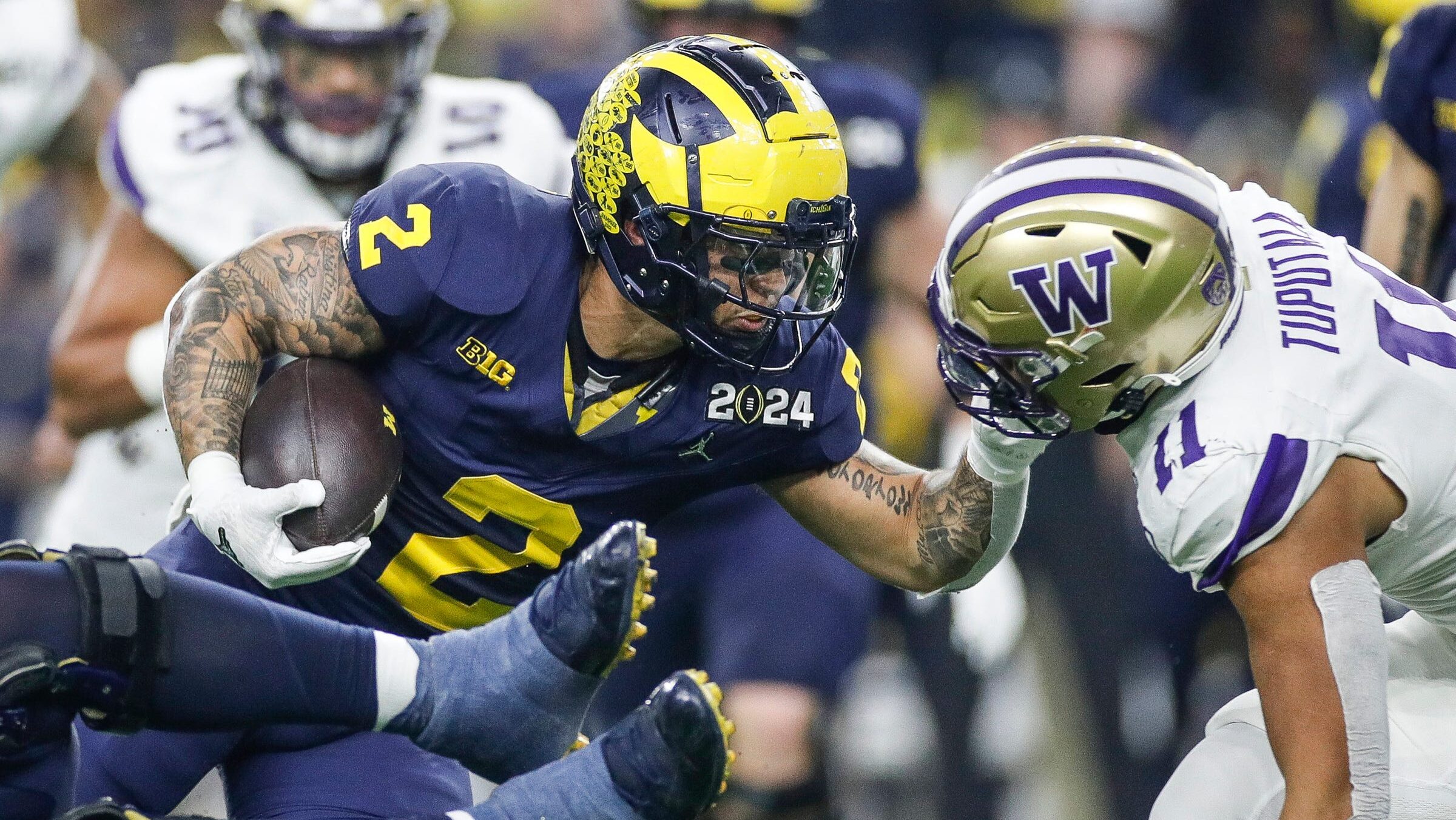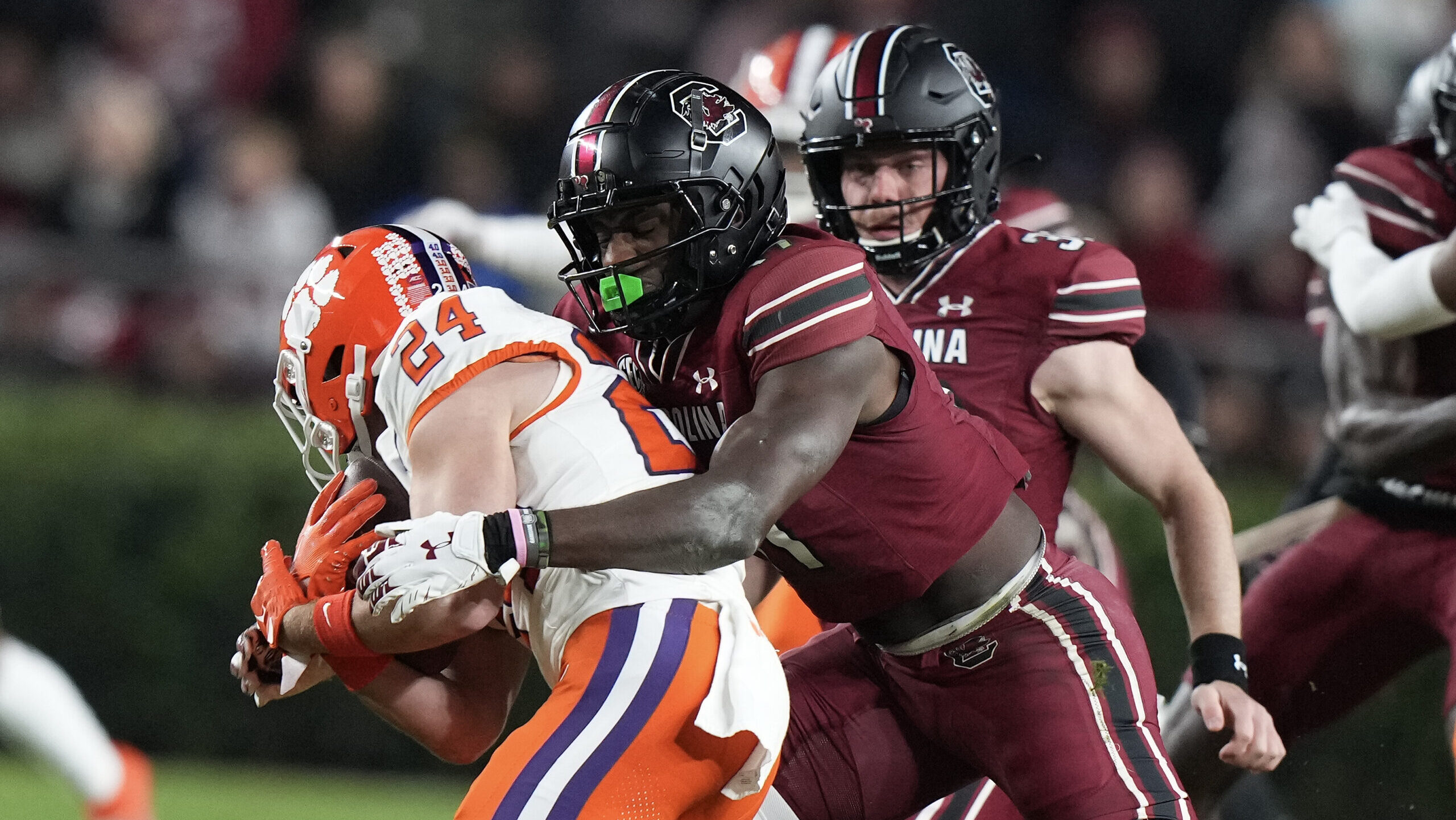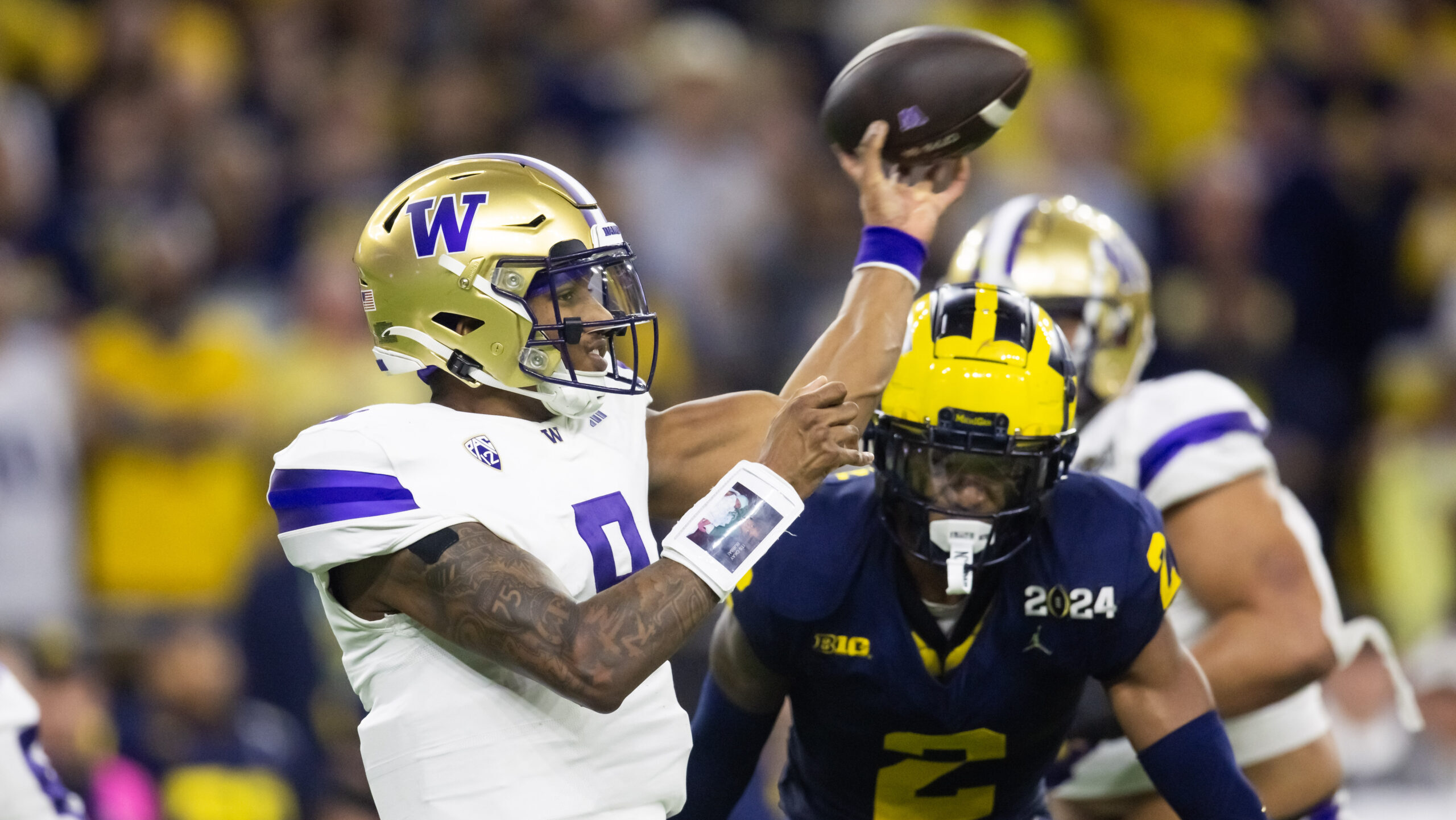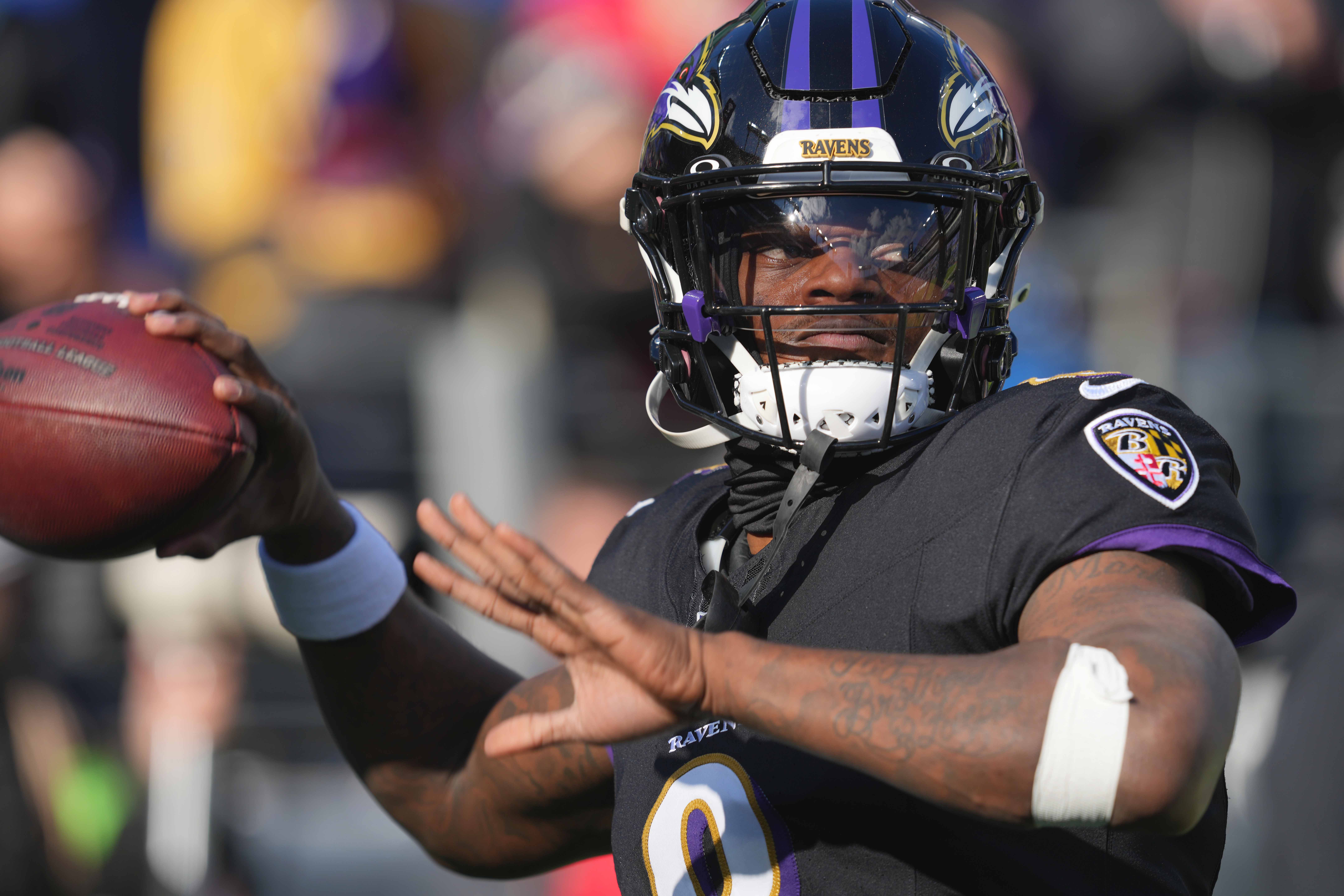Fantasy
8/9/22
9 min read
Bully Tight End: How, When, and Where (Almost Never)
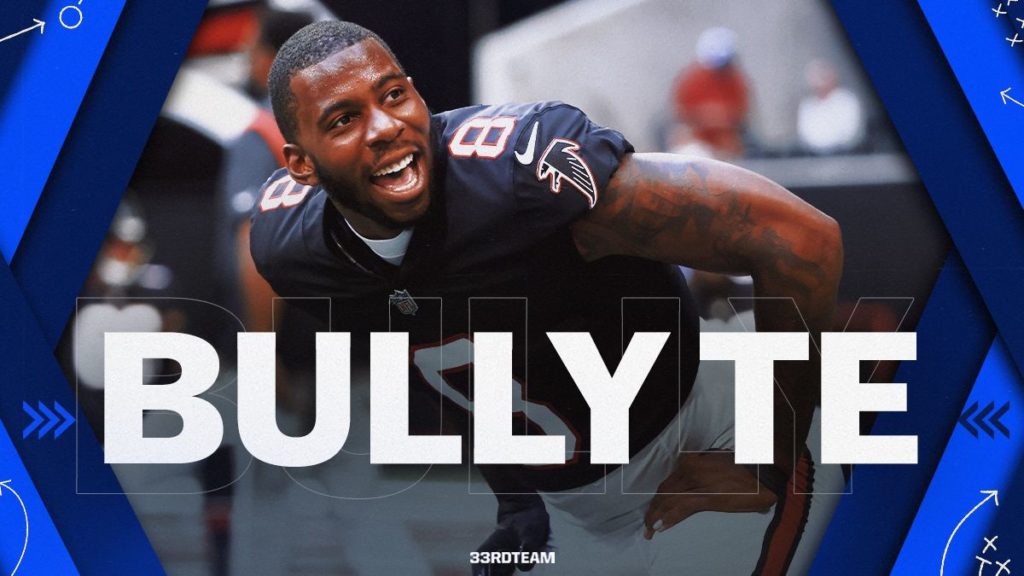
Bully Tight End is a relatively recent strategic innovation in the fantasy drafting space focused on exploiting the bimodal distribution of tight end scoring. If “bimodal distribution” scared you, think of it as tight ends either giving you elite production (Travis Kelce and Mark Andrews) or being TD-dependent with their scoring (almost every other TE).
The strategy is simple: grab two of the first five or six tight ends, even in leagues that only start one tight end, and plan to have an elite tight end in your weekly flex spot. It’s worth taking the time to think through why Bully-TE is appealing. The elite tight ends are in such short supply that by grabbing even two of them, the drafter is significantly depleting the talent pool at the position, ensuring advantages in their TE slot against every other player in their league, and starving other teams of potential fantasy points from that slot.
I’m going to break down Bully-TE in two different common formats: 1) Half-PPR scoring, using Underdog Best Ball ADPs, and 2) TE-premium scoring using FFPC ADPs to explain why I believe that Bully-TE is, more often than not, a losing bet.
Underdog ADPs and the Bully-TE Thesis
On the strategic side, taking two high end tight ends is a bet that your second tight end will comfortably slot into your flex each week. In most fantasy leagues, you’re competing against at least nine other players, and depriving one player of an elite tight end by taking your second tight end is not a significant enough detriment to the remaining field to justify hamstringing your own team - put simply, I don’t want to my team to score fewer fantasy points because I’m concerned about others’ rosters.
The “bully” aspect of the strategy is frankly just not very compelling, since I’m only removing one additional TE from the player pool, yet I’m competing against a lot more than one other person in my league. Therefore, the second TE must be the best flex option available to justify its cost. It can be tempting, when you already have Kelce and you see Andrews drop a few picks past ADP, to gobble up that value. However, it’s important to understand that Andrews’ ADP, and all the other top tight ends’ ADP is based on that player slotting into your TE slot, not the flex spot.
In the flex, wide receivers, running backs, and tight ends compete for the same starting slot, and you have to compare the expected amount of points a tight end will score with the other two positions on an equal basis. This is a really important concept; if a tight end was projected to score the same amount of points as Stefon Diggs on the season, he would be the number one pick in fantasy football, well above Diggs, because of the relative weakness of the tight end position.
When you buy a tight end at their ADP, you’re buying a positional cost markup on their expected fantasy points and associated range of outcomes because of the relative weakness of the position.
Let’s break down an example based on Underdog ADPs. Kyle Pitts and D.J Moore are right next to each other: Kyle Pitts is the 33rd player off the board and D.J. Moore is the 32nd pick. We at The 33rd Team are high on both players by the way, and in our own best ball rankings have them as the 31st and 29th player respectively off the board. Regardless, you are picking between these players often in drafts, and a potential decision point for a drafter is whether to take Kyle Pitts as their second tight end after grabbing Mark Andrews the previous round or to take D.J Moore.
The projection we at The 33rd Team have for Kyle Pitts is around 130 targets on a 25% target share. We project 77 catches for 1150 receiving yards and about 4.5 receiving touchdowns. This amounts to 10.6 Half-PPR points a game, a very strong mark for a tight end. D.J. Moore, on the other hand is projected to have 158 targets on a 27% target share, bring in 93 receptions, and end with 1240 receiving yards and about 5.6 touchdowns, resulting in about 12.0 Half-PPR points a game. I included a table below to break down the splits.
| Kyle Pitts | D.J. Moore | Difference by % | |
| Targets | 130 | 158 | 21% |
| Receptions | 77 | 93 | 20% |
| Yards | 1150 | 1240 | 7% |
| Touchdowns | 4.5 | 5.6 | 24% |
| Half-PPR PPG | 10.6 | 12 | 14% |
If we take away names and positions from these players, the clear pick is always D.J. Moore. The positional designation of tight end however boosts Pitts to an identical ADP (and within our rankings) to Moore. However, when we’re drafting our second tight end in the early rounds of the draft, we are expecting them to start most of our weeks in the flex position. Thus, if Pitts is our second tight end drafted, we should be comparing him directly to Moore on an even playing field, without regards for positional designation. In that case, there is no contest. You take Moore every single time.
How far would Pitts have to fall for it to be worth it to take him as a flex option? Well, for example, Diontae Johnson has an ADP of 46 on UD. He is another target hog on a bad offense who comes out with a similar expected points per game projection to Kyle Pitts. When Pitts has fallen over a round, it is finally acceptable to employ “Bully-TE” and scoop Pitts up as the viable best player available.
I want to note that while I am using an expected points per game projection to build out these comparisons, I am being intentional about making sure I’m not comparing players who have vastly different looking ranges of outcomes. Diontae Johnson, D.J. Moore, and Kyle Pitts are all primary options on low-scoring offenses and likely have somewhat comparable ceilings and floors. The median projection when comparing players of this type is useful for an exercise like this in terms of understanding how positional value affects ADP.
Bully-TE in Half-PPR scoring, without any sort of TE-premium, is a losing strategy at value, or at even close to value. The strategy fails to account for how TE ADP reflects the positional advantage of a high-scoring player in your TE slot, rather than the TE competing against WRs and RBs for the flex spot.
TE-Premium Formats
A lot of sharp fantasy analysts pan Bully-TE as a strategy in standard PPR variations. However, they seem to endorse or at least accept the strategy in TE-Premium formats. However, hopefully by using a similar exercise as before, I can convince you that even in TE-Premium formats, the ADP trap still isn’t being accounted for when comparing the TE to the WR and RB options.
We’re going to look at FFPC ADP because FFPC uses a TE-premium PPR format for its high stakes tournaments. FFPC’s TE-Premium scoring awards 1.5 PPR for tight ends instead of the standard single point per reception. In FFPC, the 19th player off the board is Kyle Pitts and the 21st player off the board is Mike Evans. Pitts is still a second tight end target in this format (I’ve seen someone go Kelce-Andrews) and a decision point for a drafter may be Pitts or Evans in the second round after you pick up Kelce at around pick six. We’ve already laid out Pitts’ projected stats but in the new TE-Premium format, Pitts’ points per game comes out to 15.1.
The 33rd Team’s Mike Evans projection has him with about 135 targets, 84 receptions, 1200 receiving yards, and 12.6 receiving touchdowns. Evans’ PPR points per game come out to a projected 16.4, a 8% increase over Kyle Pitts. Mike Evans and Kyle Pitts do look quite different as players, and I think a case could be made that Evans and Pitts’ distribution of outcomes aren’t that comparable, and there are definitely worlds where Pitts outscores Evans this year, especially if Chris Godwin and Julio Jones outperform expectations.
However, I think in most worlds Evans is going to outscore Pitts because of the touchdown opportunity disparity between the two situations, and our projections seem to agree. If we remove the positional tags, Evans, who has an ADP two picks past Pitts (which is a significant difference this early in a draft), is still the stronger pick.
In the TE-Premium format, though, if Pitts falls even five picks, he’s competing with a player like Tee Higgins who our projections have scoring 15.4 PPR points per game, a fairly comparable amount to Pitts. Higgins and Pitts is an interesting debate if we take away the positional tags. Though personally I like Higgins, I think its acceptable to take Pitts at this point. Pitts doesn’t have to fall nearly as far in the TE-Premium format to be worth picking up as the best available player.
I still wouldn’t recommend going Bully-TE at ADP, but a reasonable and realistic fall from ADP can actually make drafting your second elite tight end a viable strategy in TE-premium scoring leagues, where TE is a stronger position than in more typical leagues. Just remember that even in TE-Premium, you need to be comparing how the tight end stacks up on an even playing field against the running backs and wide receivers at that slot. No cost markup because of the “TE” tag.
Which TEs to take?
Hopefully this article has made clear when it is appropriate to go Bully-TE (just don’t in a non-TE-premium scoring, and after realistic, but substantial falls in ADP in TE-Premium scoring), but in case you’re wondering which tight ends to take, we got you covered. Here at The 33rd Team, we’re not a fan of Mark Andrews at anywhere near his current ADP, and you can read up more on why here. On the other hand, taking a player like Darren Waller as your second tight end in TE-premium leagues is a strategy we endorse at The 33rd Team, due to what we believe is woeful mispricing. You can read more on which tight ends we like and which we don’t here.


